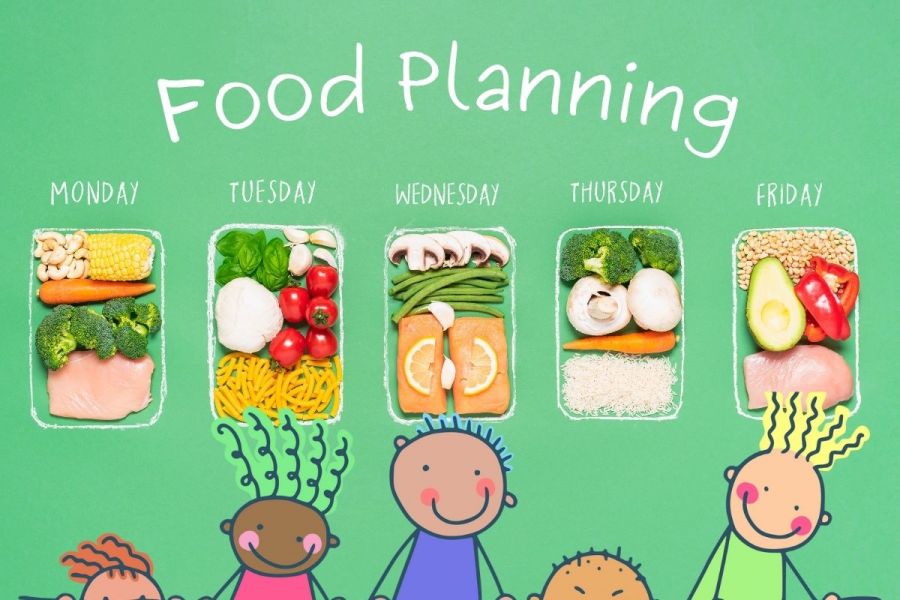How to get children involved with meal planning
If you have a bored kid, one that loves junk food too much, or just want to increase the range of healthy foods your children eat, getting them involved in meal planning is a great idea. Kids will solve the problem by themselves.
If you've ever wondered how to get children involved with meal planning, chances are you have either a fussy eater or A Kid Who Loves "Junk Food" Too Much. And, then again, there are always the parents who will do anything to keep their high-octane balls of energy entertained. One other reason to get kids involved with meal planning and prep: Experts such as researchers from the National Institute of Health say children are far more likely to eat healthy foods if these involve dishes the children themselves have helped prepare.
But when it comes to involving your children in meal planning, do remember that children's palates are not as finely developed as adult palates... And be prepared to re-discover your worn-out imagination!
Ten Tips to Planning Food with Kids Success
Listen to their ideas
Ask for your children's input when planning your grocery shopping, and applaud them for their answers (even if their suggestions sound revolting to you!)
Make it fun
Children take their tone from you. Make it a game: Let your child physically make the shopping list (on a special, colorful notepad); then take her grocery shopping with you and ask her to find the items.
Think outside the box
Kids love things that aren't "everyday", so be prepared to jump right in when your child suggests you buy peanut butter to put in her celery sticks.
Plan ahead
There are some wonderful cookbooks out there specially designed and tested to appeal to children's palates and imaginations. Get one, and get into the habit of going over recipes together before your shopping trip.
Think and buy in miniature
Children are often enchanted by anything that's more in scale with their tiny fingers than yours. Dolls' tea sets, tiny drinking glasses, mini marshmallows, baby bananas or miniature knifes and forks all go a long way to making eating feel like play.
Combine fruit and vegetables
Let your child pick an array of fruits and vegetables (set a limit, if you're on a budget!) Ask her to think up the most whacky combinations she can.
Make sure, once you get home, you set aside time for both of you to prepare the foods you've chosen.
Add a healthy, yogurt dip (a hint of raspberry juice helps enhance fruit or veggies alike) and watch your children eat raw foods with gusto
Make or buy a special apron for your child
Nothing "cues" a child more easily than donning a special apron. You can even involve your child in making the apron, if sewing is your thing: Get him or her to choose the color, the fabric, the trim. Make a mini-BBQ apron, if your child is male.
Create a routine
Create a special time during the week for together-time food planning -- and prep. Every Saturday lunch, the afternoon snack, Friday after school and Sunday morning brunch are all occasions to consider. Whichever time slot you pick, however, go with your child's natural rhythm -- don't try to make your child get excited about planning menus over breakfast, if he's just not a morning person!
Make your own "take out" food
There are plenty of places on line to find recipes for your child's favorite fast foods: Look these up with your child.
One added advantage to creating it yourself -- you can substitute lower-fat ingredients.
Prepare a picnic
Even if you go out to the deck to eat it. Remember to include the "special" touches such as a cheerfully-flowered or checkered plastic tablecloth (you can get these at any dollar store); or little paper umbrellas for your drinks or fruit salad). Planning involves allowing your child to think up items like paper plates or pick that flowered tablecloth.
Lead by example
But if you really want your children to eat healthy diets, be their example! There is no use trying to convince them to snack from a fruit-and-veggie plate if you're in the middle of breaking out the potato chips.
Children become not what you preach, but what you model. Getting them involved teaches them that food is a wonderful, pleasurable experience. Instead of nostalgic memories of comforting fast food French fries, they'll turn to whipping up a quick and easy batch of fresh, chocolate-dipped strawberries or fresh banana in oatmeal as adults, during occasions where they need the solace of childhood memories to sustain them.
And that's a priceless gift to your child's future self.

